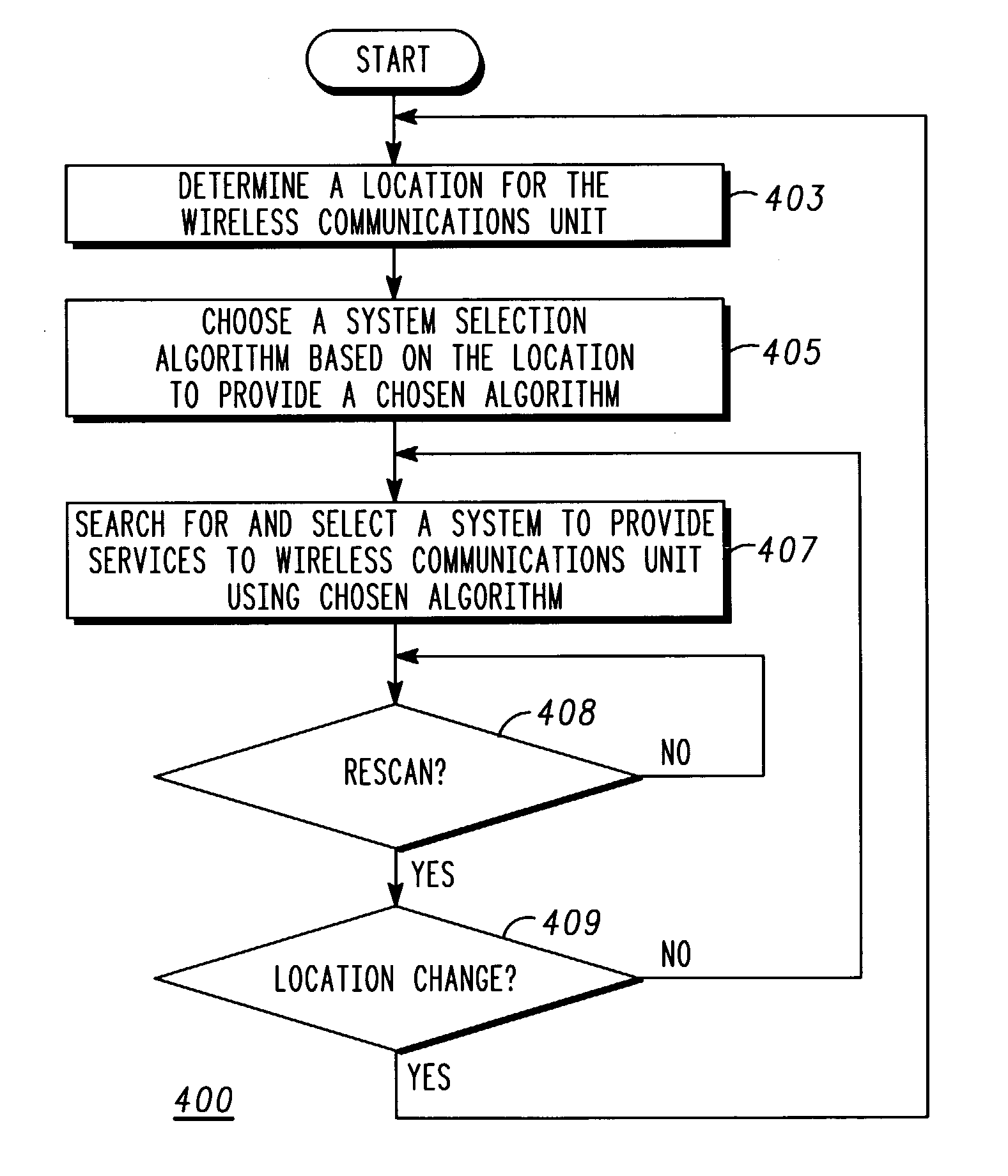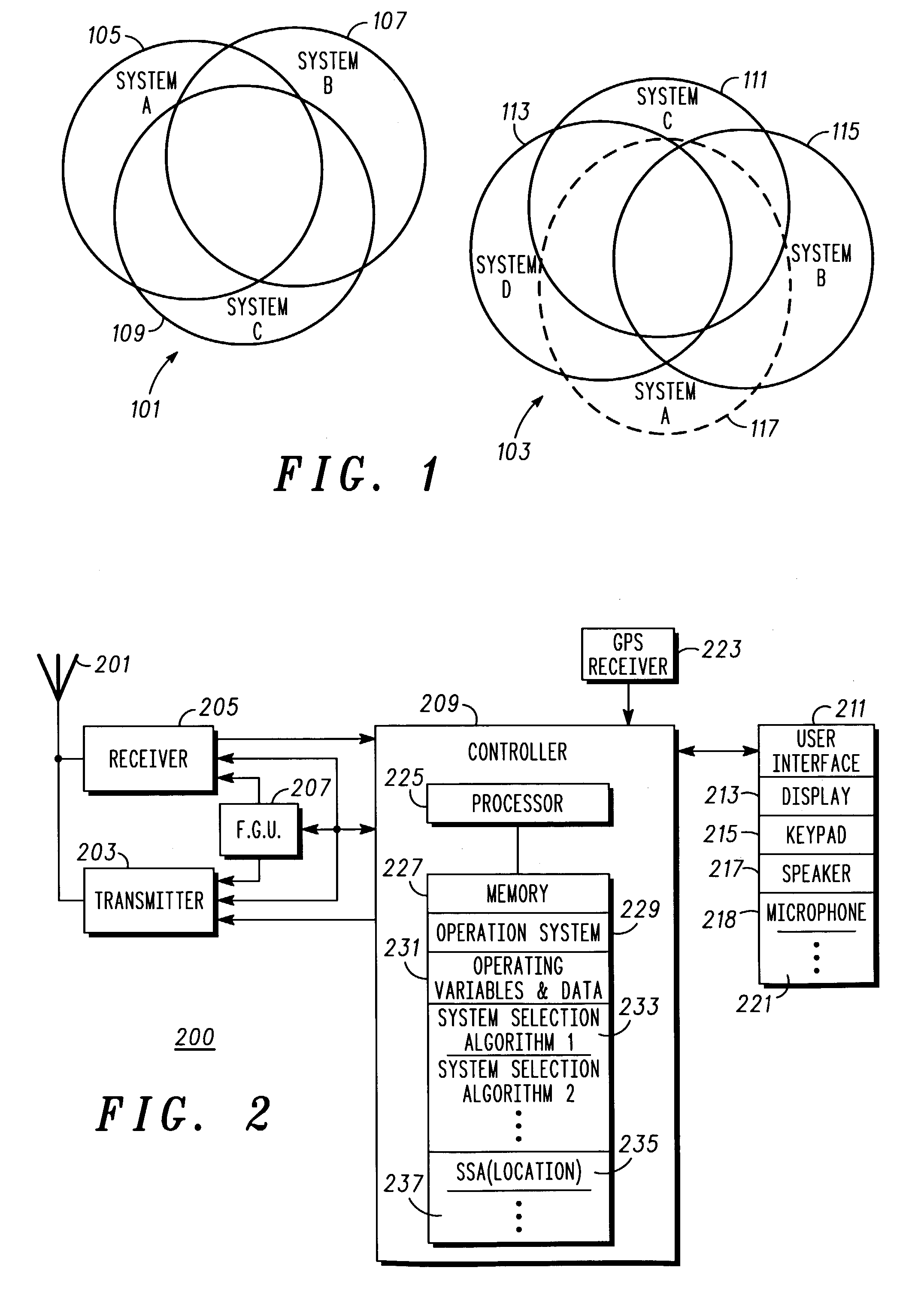Method and device for choosing a system selection algorithm that is location dependent
a system selection and location-dependent technology, applied in the field of communication equipment, can solve the problems of time and power consumption tasks, still time and power consumption approaches, and time-consuming and thus power-consuming tasks
- Summary
- Abstract
- Description
- Claims
- Application Information
AI Technical Summary
Benefits of technology
Problems solved by technology
Method used
Image
Examples
Embodiment Construction
[0011]In overview, the present disclosure concerns communications systems that provide services and specifically communications services such as cellular phone services to wireless communications units or subscriber units or devices and users thereof. More particularly various inventive concepts and principles embodied in apparatus and methods for providing or choosing a system selection algorithm at a subscriber or wireless communications unit are discussed and described. The communications systems and units of particular interest are those being deployed and developed commonly known as GSM (Group Special Mobile), GPRS (General Packet Radio System), IS-95 CDMA (Code Division Multiple Access), CDMA 2000, integrated digital enhanced network (IDEN), 2.5G or EDGE, and 3G or W-CDMA (Wideband CDMA) (UMTS) systems or variations and evolutions thereof that are suitable for providing services to wireless communications units. As further discussed below various inventive principles and combi...
PUM
 Login to View More
Login to View More Abstract
Description
Claims
Application Information
 Login to View More
Login to View More - Generate Ideas
- Intellectual Property
- Life Sciences
- Materials
- Tech Scout
- Unparalleled Data Quality
- Higher Quality Content
- 60% Fewer Hallucinations
Browse by: Latest US Patents, China's latest patents, Technical Efficacy Thesaurus, Application Domain, Technology Topic, Popular Technical Reports.
© 2025 PatSnap. All rights reserved.Legal|Privacy policy|Modern Slavery Act Transparency Statement|Sitemap|About US| Contact US: help@patsnap.com



